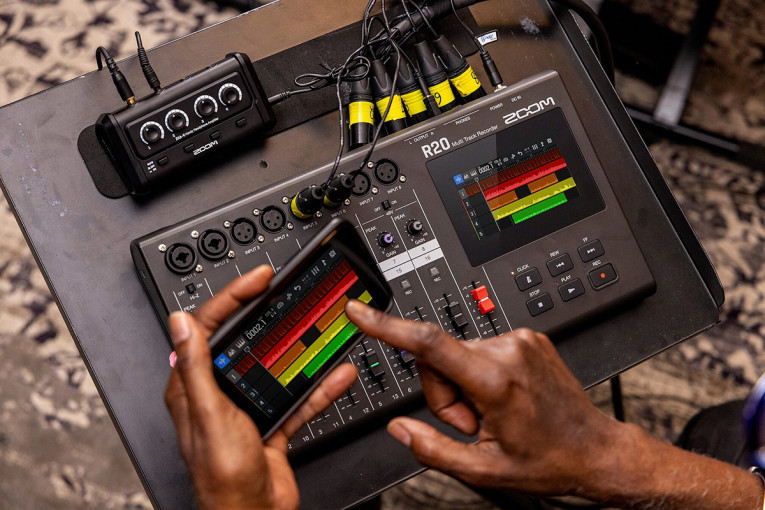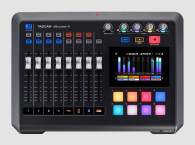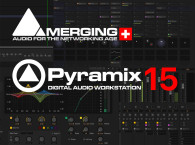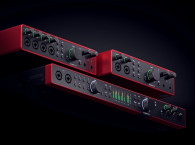
Of course, this is 2021, no one records to inconsistent cassettes, and the mini "portastudios" are in fact powerful integrated recording and mixing studios that use large capacity solid-state memory cards (SD), offer updated USB-C computer connectivity, work as both an audio interface and controller, and have fully integrated digital processors, effects and much more. Over the years, Zoom Corporation (the original Japanese audio manufacturer, not the Chinese version of Skype) has offered quite a few of these integrated digital consoles and multitrack recorders, and currently offers the LiveTrak family, of which the L‑12 model is the most recent.
We have seen also a recent trend in the music production market, with manufacturers of musical instrument workstations and music controllers now integrating fully-featured recording and DAW features that can be used with built-in touchscreens - not even needing to be connected to a computer (even if they still do, most of the time). Apparently, we've gone full circle, from everyone offering hardware with no displays and simply allowing integrations with computers, tablets or smartphones, to now seeing the return of dedicated hardware designs with fully integrated interfaces and screens. By the way, iPads are still the best touchscreen controllers, and are increasingly used in professional applications in live shows and even broadcasting for real time interaction.
The new Zoom R20 Multi-Track Recorder is a great example of what's possible with the concept, trying to cram as many cutting-edge features as possible in the most compact surface - even if portability in this context is basically irrelevant (yes, the R20 fits in a carry-on suitcase, but you will need to ship 60 pounds of cables and accessories in a large trunk). The whole design is inspired by the fact that we can now have a 4.3-inch full color touchscreen (basically a built-in smartphone without the phone) that totally emulates a (small) DAW interface. As Zoom describes it, "a familiar touchscreen interface" that allows users to track, edit and mix complete songs with the R20. The touchscreen user interface is simple and intuitive, even allowing Zoom to offer audio-assisted instructions for the visually impaired with VoiceOver and VoiceOver Gestures.
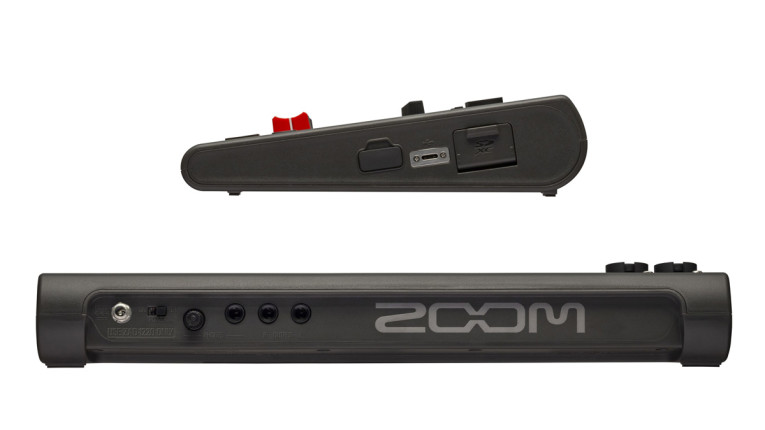
The hardware surface itself contains six XLR inputs plus two combo inputs, to feed 16 tracks of recording (8 simultaneously) - enough for solo musicians to full bands. The audio recordings are stored directly to SDHC or SDXC cards up to 1TB in 24-bit/44.1kHz BWF-compliant WAV files. The color-coded faders, gain knobs and track regions create an easy to understand workflow - as long as you don't mind dealing with the tiny gain pots per channel. And because there's basically a mini-computer inside (let's not call it a built-in smartphone), Zoom added "software" features, such as 150 internal rhythm patterns, MIDI sequencing, with file import and even an internal synthesizer with 18 sounds +1 drum kit, playable via a MIDI keyboard connected via USB-C.
In terms of processing, the Zoom R20 also offers an EQ, compressor, gate and multi-effects processor (max 3 simultaneous effects), compatible with Zoom's own Guitar Lab software. All this built-in, without dedicated buttons. Just connect whatever external controller you like.
Of course, at any moment, users will realize that the touchscreen is just too small to do more than basic recording and tracking, and that is the moment when the Zoom R20 converts into an 8-in/4-out USB-C (USB 2.0) audio interface connected to a Mac or PC. Much better to edit and mix any type of material. That said, we can see the R20 being used on its own by a reporter in the field to edit and mix a story with soundscapes and commentary - but that just brings a whole other level of comparisons...

Is That It? Well, No.
As Zoom explains, the R20 hardware offers much more. Inside the compact surface users will find in fact "the best preamps and noise floor of any multitrack recorder Zoom has ever designed." Yes, Zoom says this is as good the quality audio preamps and mix bus they have designed. And because you don't want to fly to that remote location and carry heavy powered studio monitors, R20 users will have to rely on headphones for monitoring. The R20 does have one one headphone preamp delivering 20 mW + 20 mW (into 32Ω load) maximum output level - apart from the dedicated outputs for "outboard" listening.
Other important details in the design include the need to have an AC adapter (DC12V) to power the system. Zoom added a new locking adapter to ensure security against accidental unplugging - just make sure you don't forget to carry the Zoom ZAD-1220 AC adapter. On the accessory case, users might want to also carry the optional Zoom BTA-1 Bluetooth dongle to control the R20 wirelessly from any iOS device. This is actually a good idea, allowing the R20 to stay useful whenever Bluetooth gets better in the future (it shouldn't take long) by simply replacing the BT dongle. Zoom also says there will be a dedicated app to control the R20 features externally, coming in 2022.
Overall, this is impressive when compared with the early "portastudios." The Zoom R20 is effectively a powerful integrated hardware solution (interface, preamps, recorder) that can always be connected to a laptop in the field - Zoom understands this and even adds a Steinberg Cubase LE Software license in the box. Fair value for just $399.99 (MAP).
www.zoomcorp.com
